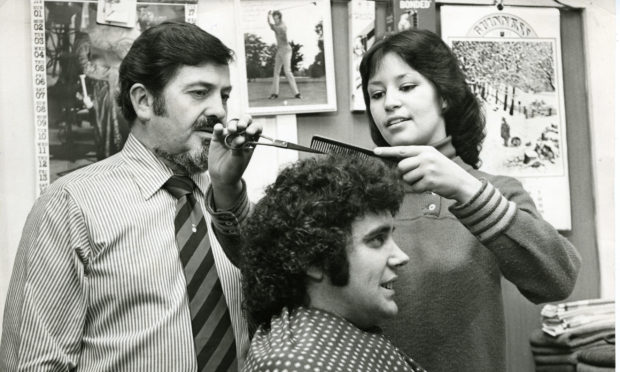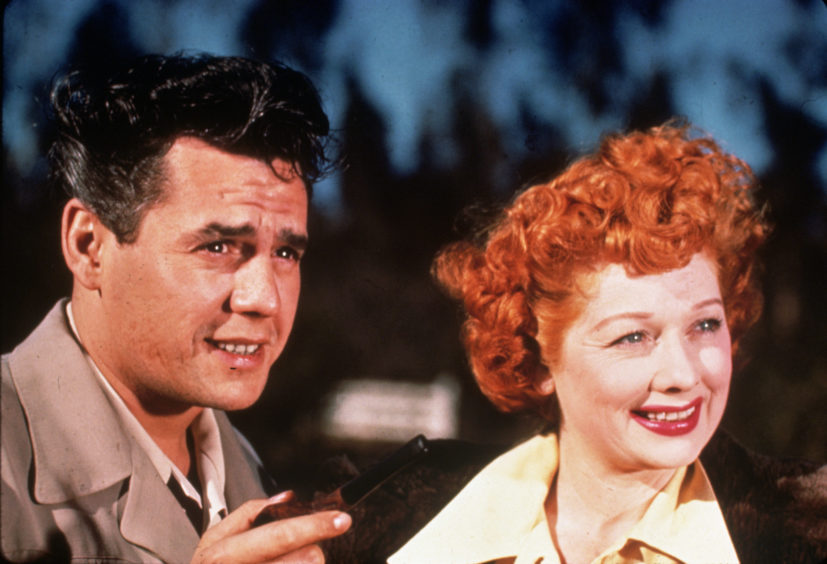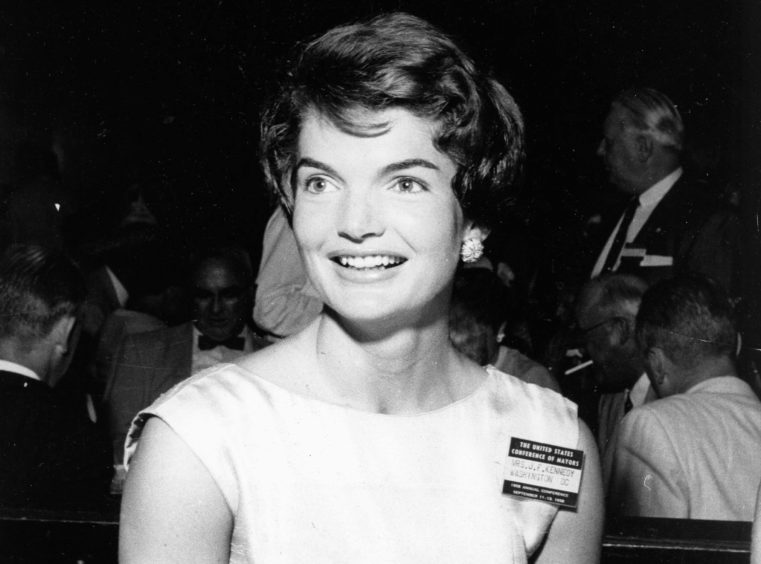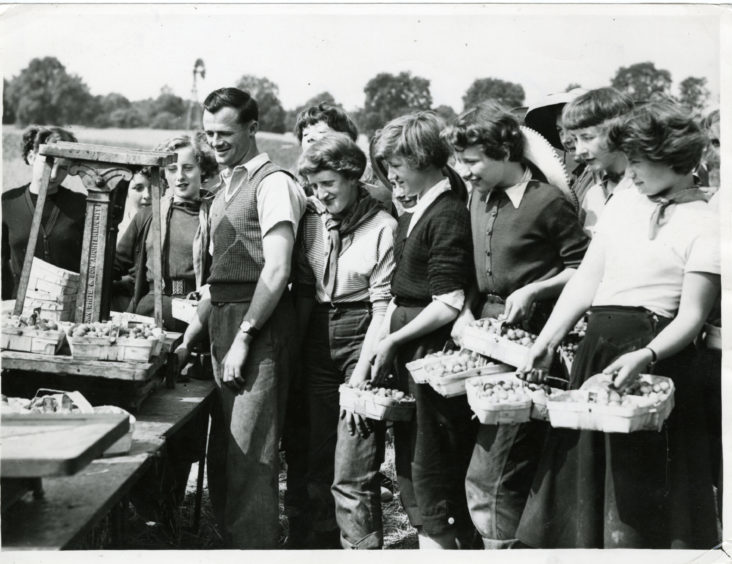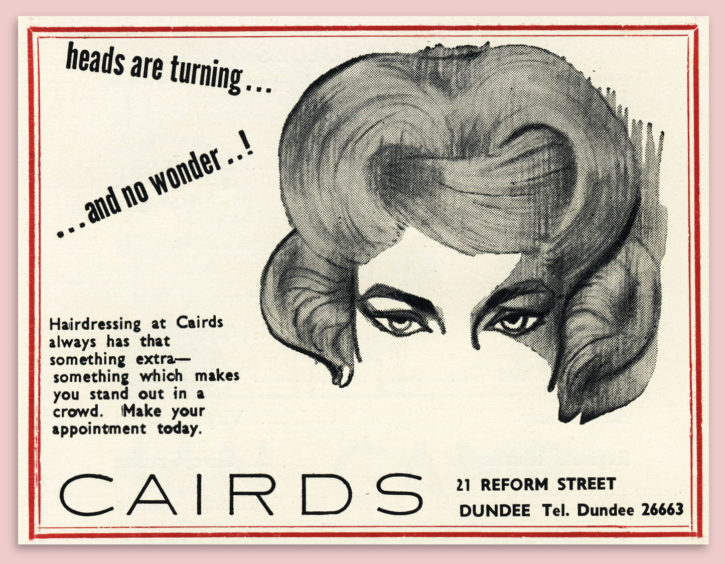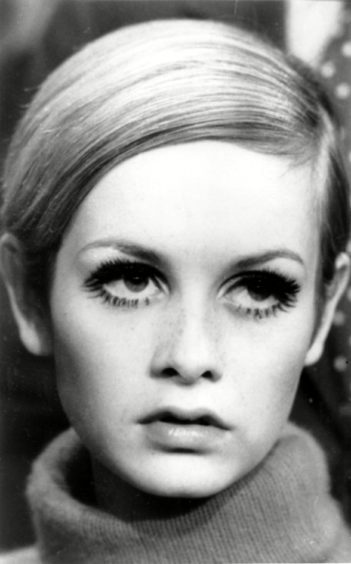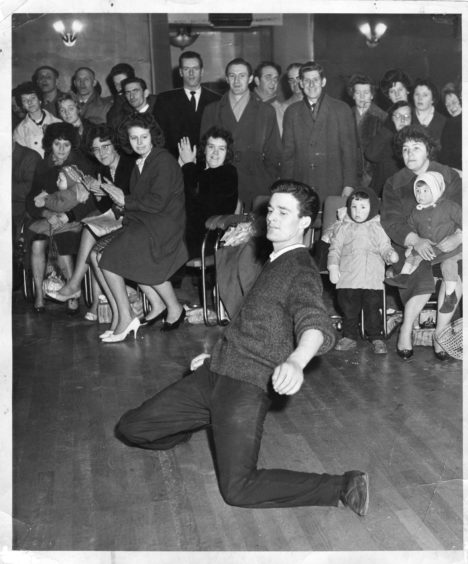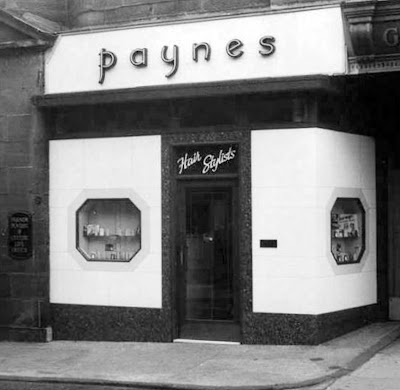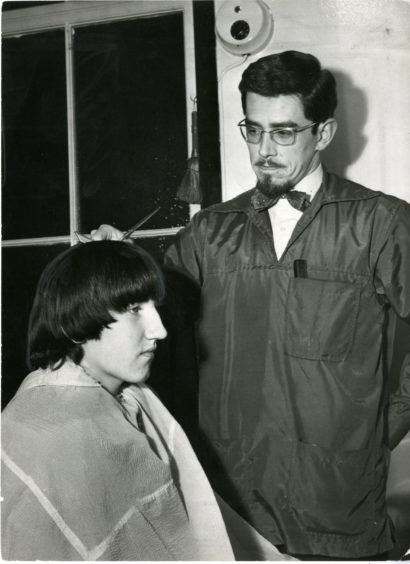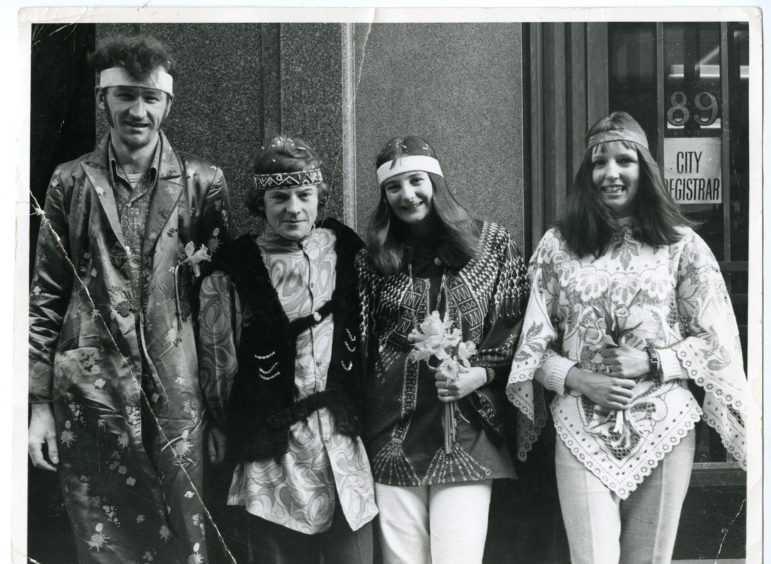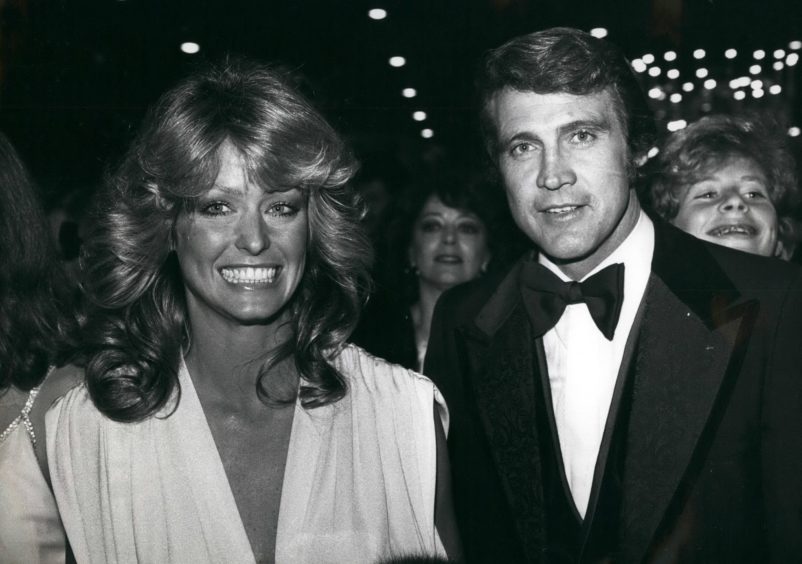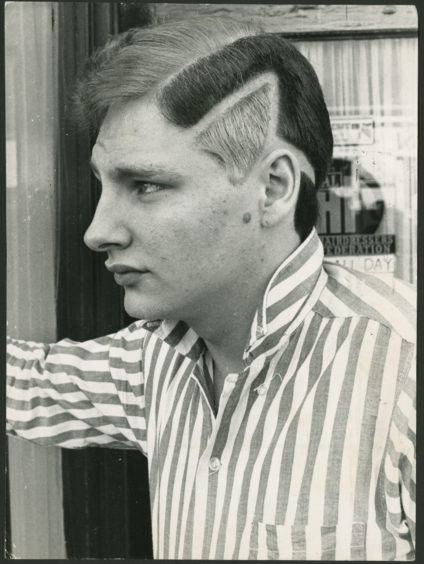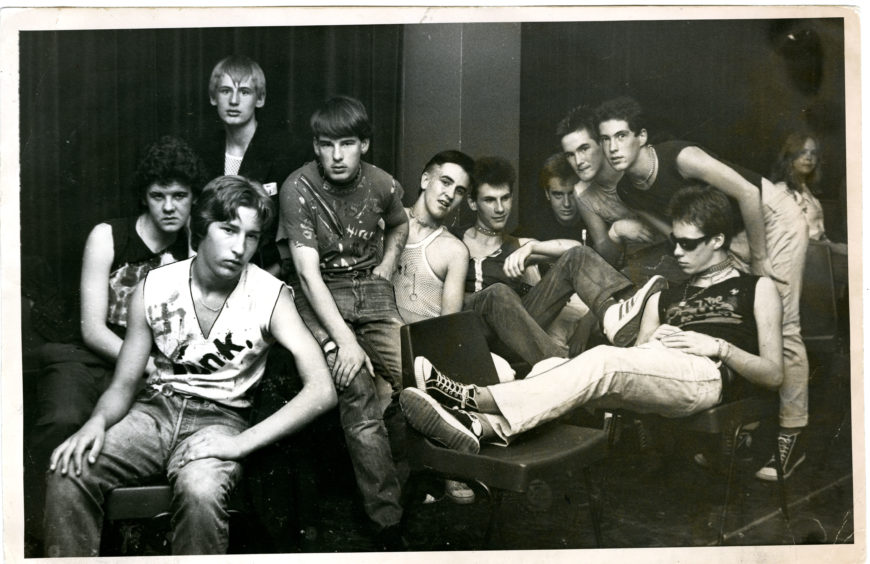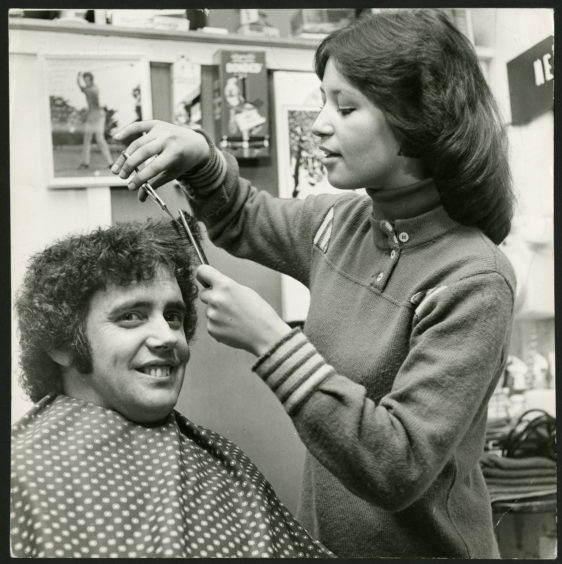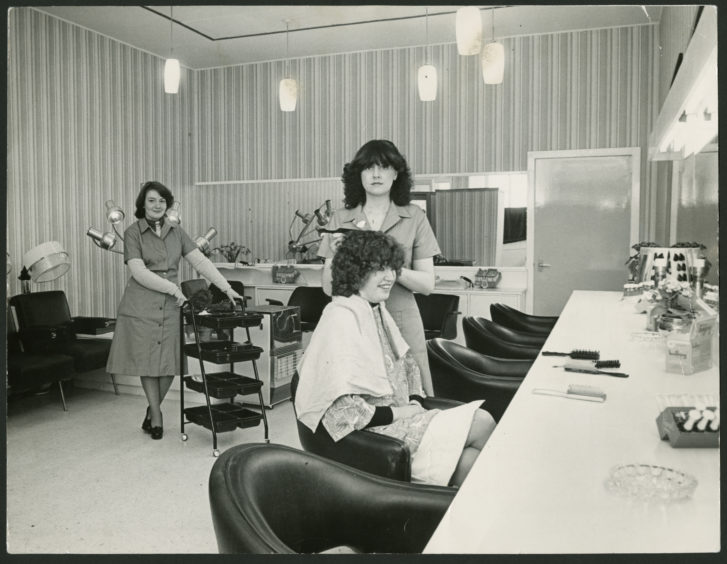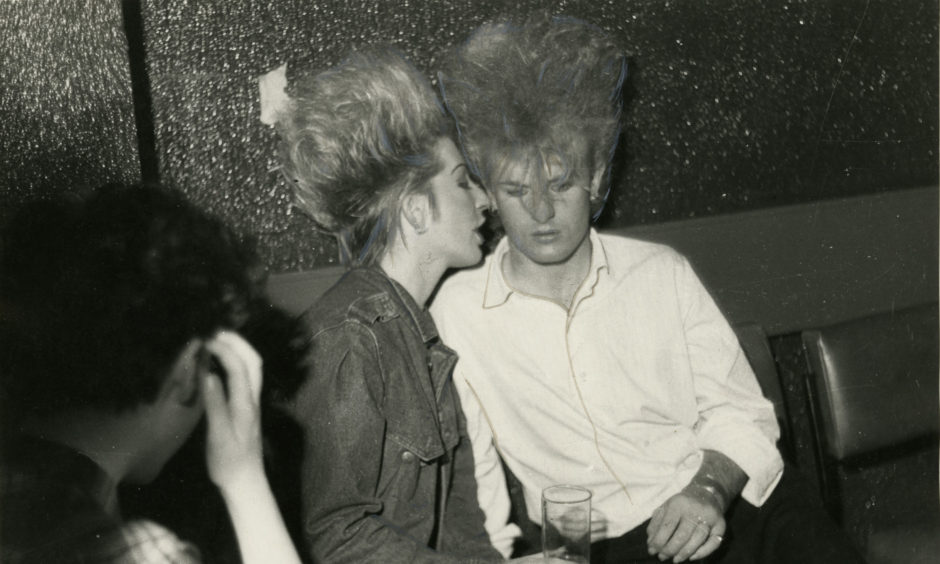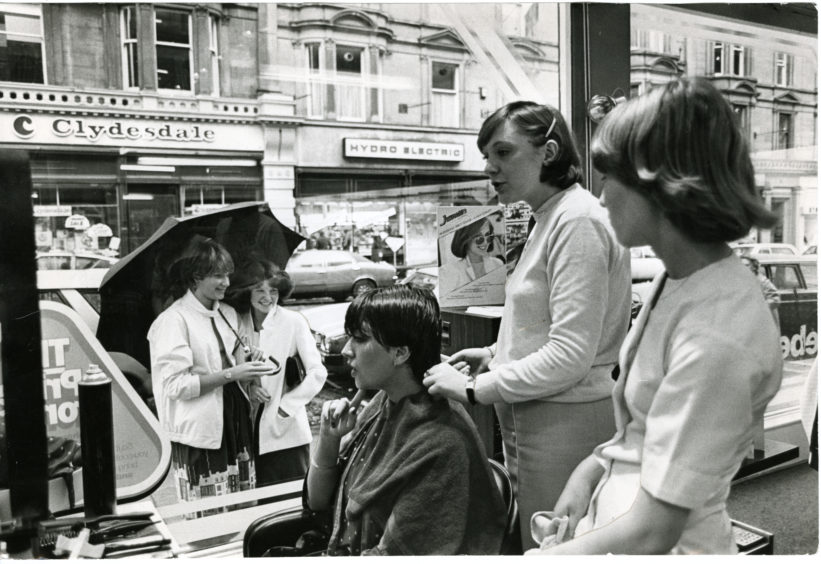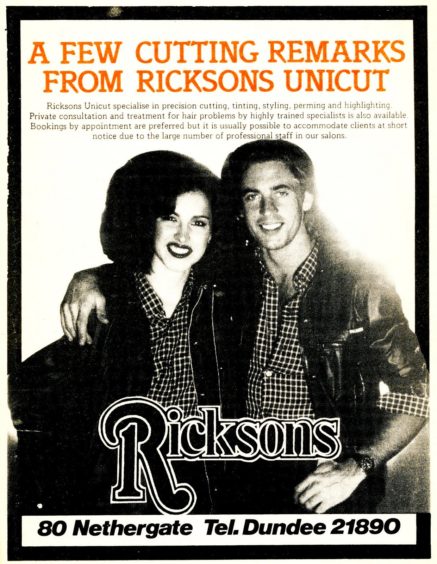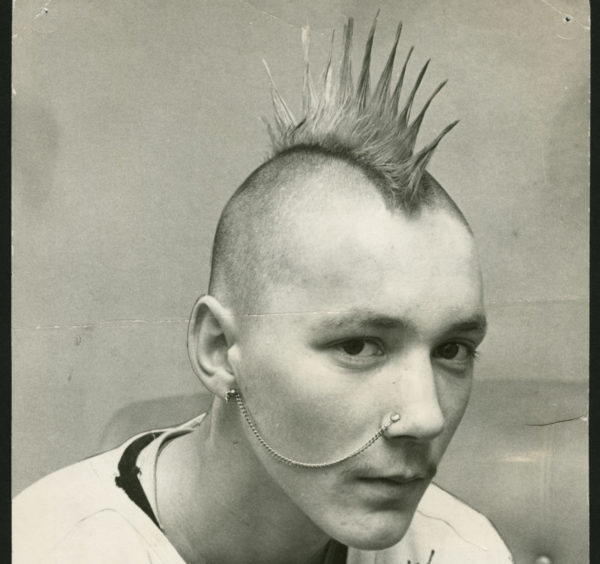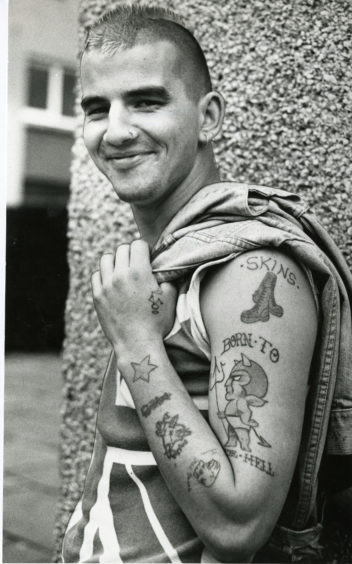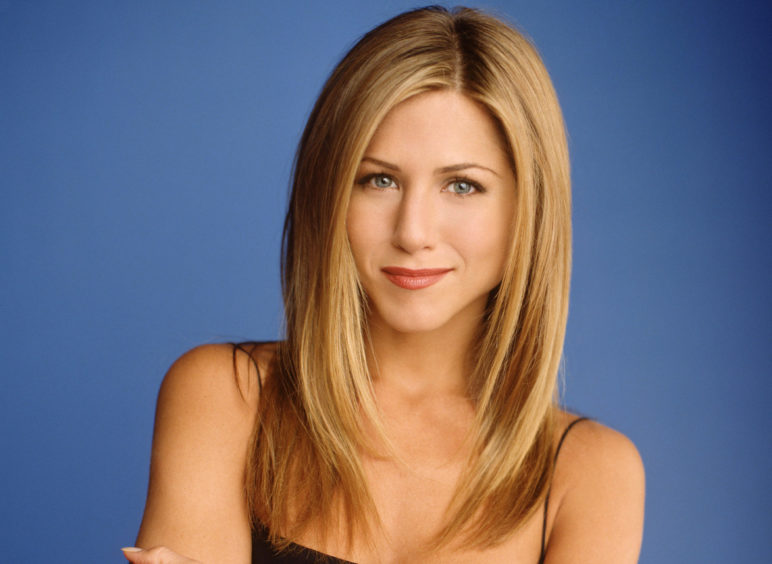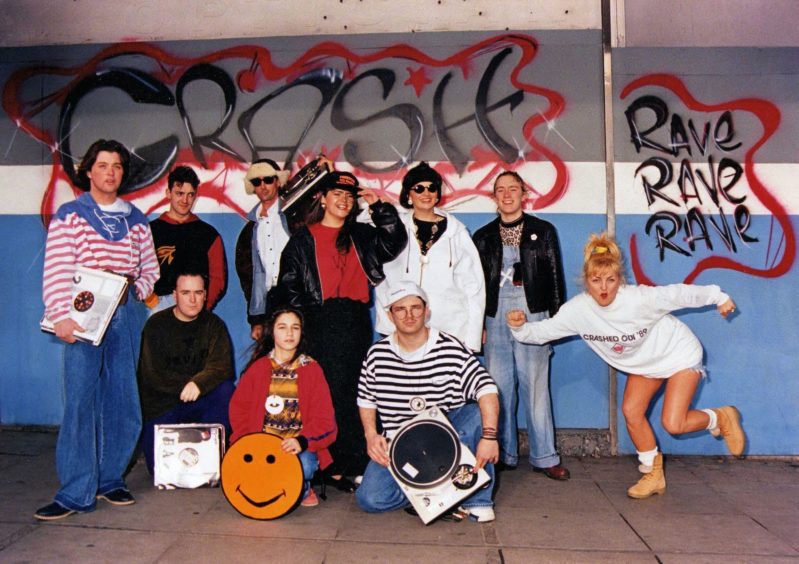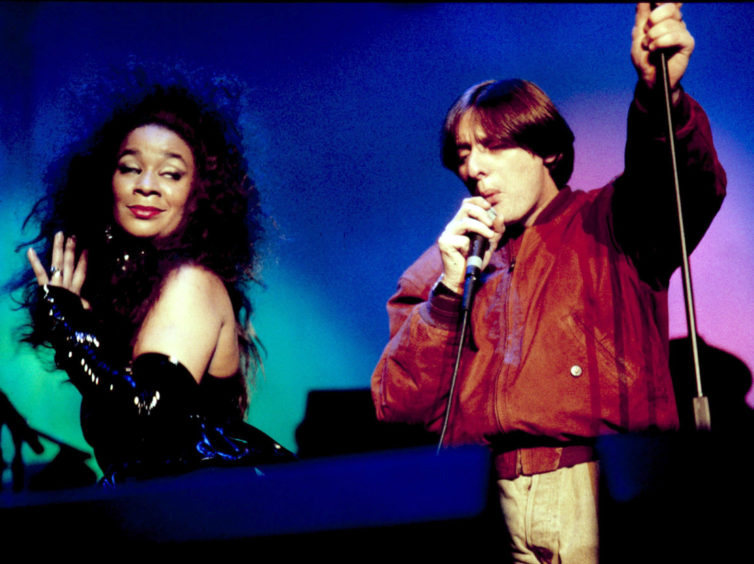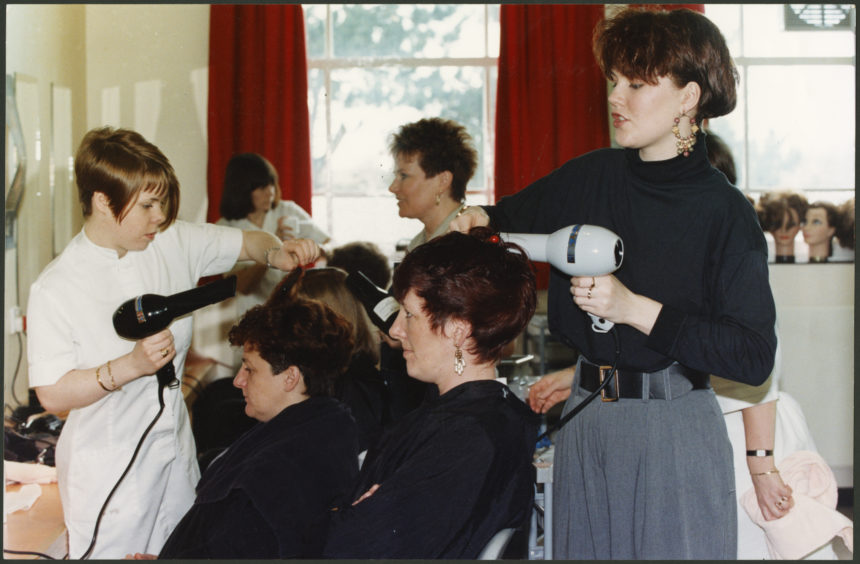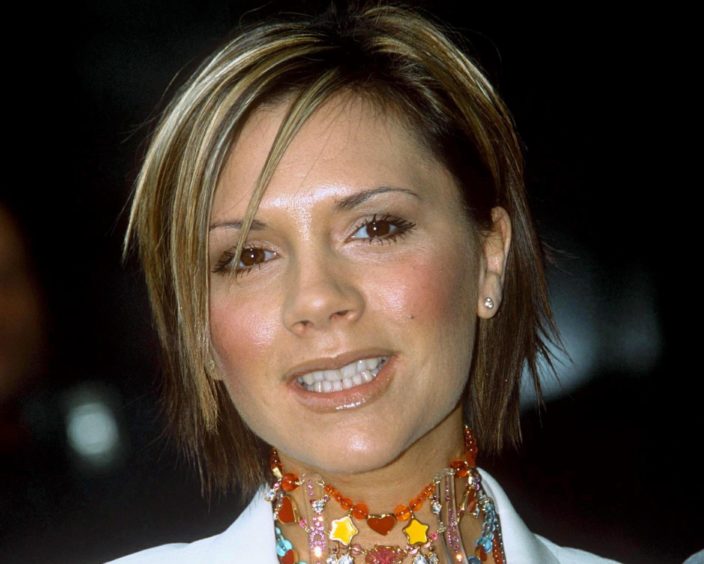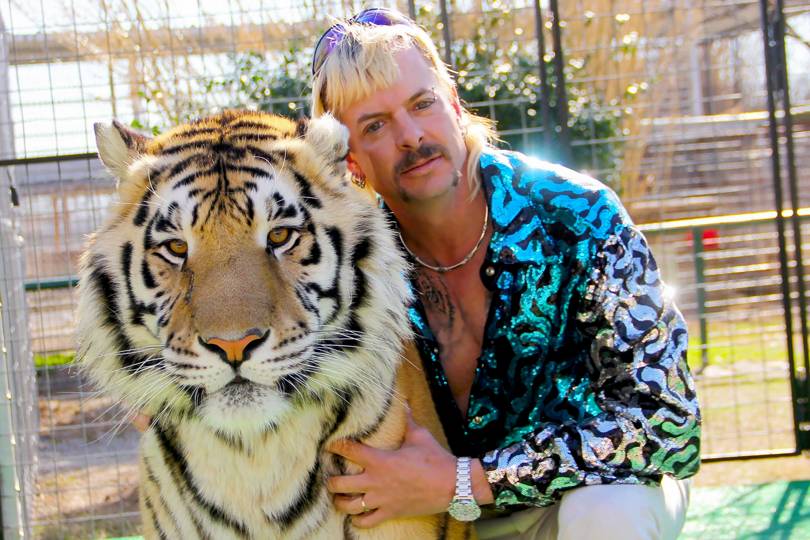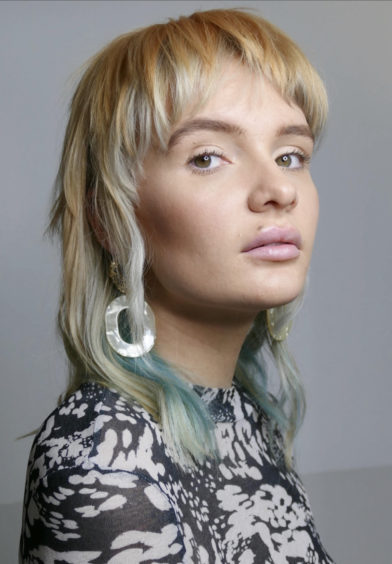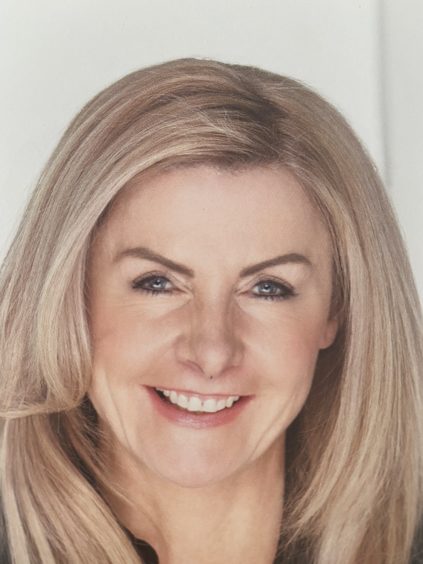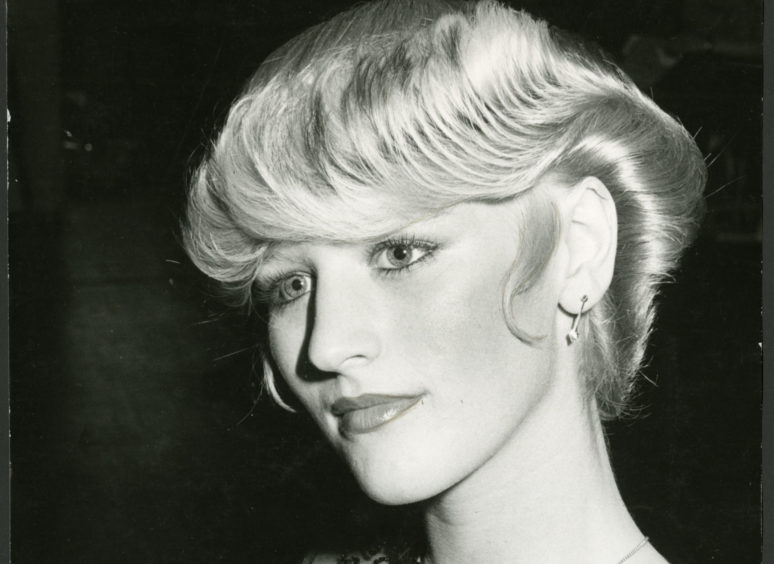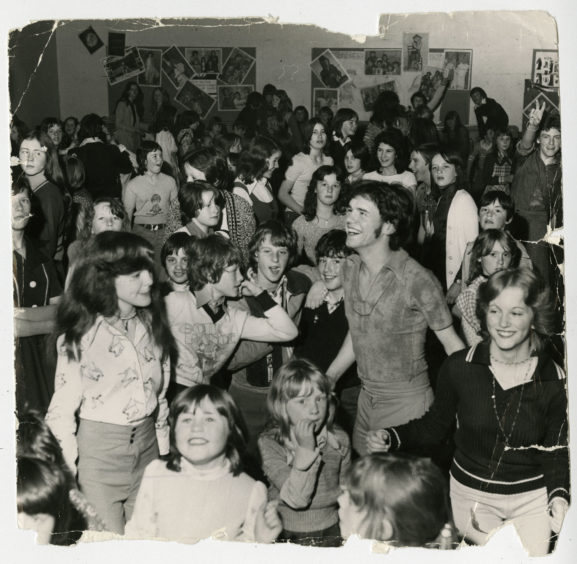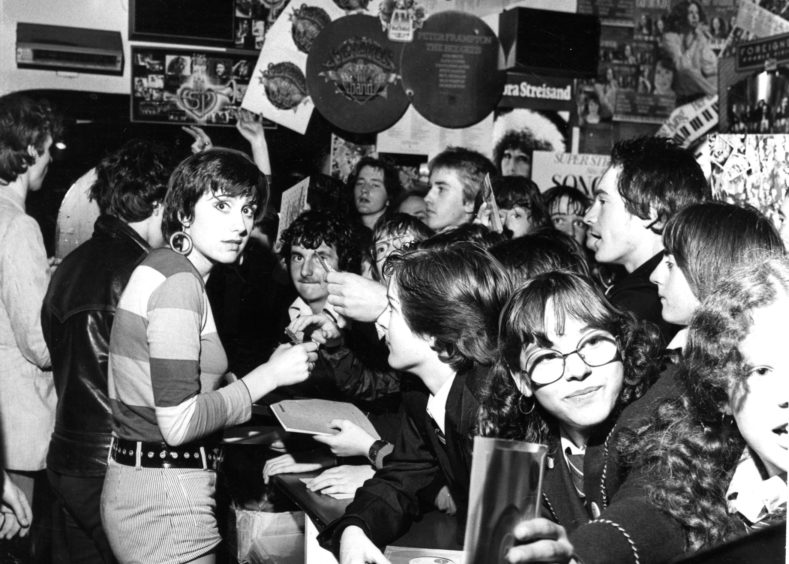Beehives, bobs, buzz cuts and bombshells…hairstyles can tell the world a lot about you.
As well as defining moments in time, hair trends have the amazing ability to rekindle memories of years gone by, while sometimes making us cringe as we flick through old photograph albums.
Here we take a look at some of the cuts sported by people in Dundee through the ages – from the good to the bad to the ugly!
1950s
Taking the soft curls of the 1940s in a slightly more dramatic direction, signature styles in the 1950s include the velvet curl, often recognised by the sweeping curl over one eye – a classic look in old Hollywood.
The 50s also introduced big bouffant styles, achieved by backcombing hair to add extreme volume.
“With the golden age of cinema at its peak and many households owning a TV for the first time, the hairstyles of the biggest stars of the era were emulated by the masses,” says Mary McGowne, founder of the Scottish Style Awards.
“From rebelliousness to full-on glamour, hair salons in 50s and 60s Dundee took the public on an adventurous journey.”
Hair dos had memorable titles. There was the “poodle cut”, given its name due to the permed, tight curls resembling the curly hair of a poodle and worn by the likes of Lucille Ball.
There was also the “duck tail” – the popular 50s men’s hairstyle named for its resemblance to the rear view of a duck which involved slicking the hair back and then parting it down the centre, a la Tony Curtis.
“Rebelliousness was celebrated by 50s youth and stars like Elvis Presley and James Dean adopted the pompadour – longer hair that was greased up on top and slicked down on the sides, earning wearers of the trend the fitting nickname, ‘Greasers’,” says Mary.
“One of the most prevalent hairdos, the bouffant, involved dramatic volume, backcombing and ample use of hairspray.
“Styled so as to stand out from the head in a rounded shape, and derived from the French word for ‘swelling’, it was the coif of choice for style royalty such as Jackie Kennedy, Dusty Springfield and Sophia Loren – as well as actual regal fans, notably Princess Anne.”
As the bouffant gained popularity it morphed into the towering beehive style.
“In Dundee, a number of salons specialised in all these trends,” says Mary.
“Jaconelli 57 on Perth Road was established in 1957 (and is still going strong), Winston Turnbull at 15 Ogilvie Street was the ‘small hairdressers with the big reputation’ and offered ‘curls and waves essential for the modern woman’ while Parr at 128 Gray Street in Broughty Ferry promised a salon experience that was ‘a cut above the rest’.
“Draffens, as was common in this period for department stores, offered a ‘luxuriously appointed hairdressing salon’ that appealed to the ‘young fashion conscious seeking up-to-the-minute styles’, while Cairds at 21 Reform Street guaranteed ‘heads would turn…and no wonder!’.
“Hugh Farquhar at 76 High Street was a popular destination for men with adverts proclaiming ‘your hair needs us’.”
1960s
The Swinging Sixties saw a counterculture revolution and hair styles were no exception.
Hair became a symbolic representation of social change and freedom with trends such as the bombshell, the beehive, the pixie and the modern bob.
“The bombshell was immortalised by Brigitte Bardot and Jane Fonda while the pixie cut was launched by Twiggy,” says Mary.
“The modern bob – the sharp, angled six-point cut pioneered by Vidal Sassoon and popularised by the likes of Mary Quant – also proved hugely fashionable.”
Originating in Chicago in 1960, the beehive was adopted by The Ronettes, Aretha Franklin, Barbara Streisand and Dolly Parton, and has proved an enduring hair design statement.
The biggest salon chain in Dundee during this time was Fredericke, with salons on Cowgate, Perth Road and Logie Street as well as a training centre in Nethergate.
With the emergence of the hippie movement in the later 60s, the voluminous and curly styles gave way to long, slick straight, centre-parted styles. To get this look, many women used irons to smooth out their hair.
“In Dundee, Paynes salon epitomised cutting-edge modernity when it arrived on King Street in the 60s with its white futuristic exterior and ultra-modern signage while John Watson, on the corner of Cleghorn Street and Benvie Road had a point of difference from most other salons in the city with its expertise on wig making,” says Mary.
1970s
The 70s was another decade of change with hairstyles reflecting a succession of trends – the hippie movement, androgyny, the rise of feminism, the peacock revolution, glam rock, disco and punk.
The long locks of the 60s continued into the early 70s, often accompanied by flowing waves, headscarves and floral decoration.
But as the disco era kicked in, volume and curls came surging back into style.
For African-American women, the 70s marked a period of time where natural hair was celebrated, and many women opted for an Afro, rather than straightening their hair.
However the feather cut was probably the most iconic and popular hair trend of the 70s.
“Made famous by Farrah Fawcett, and worn by men and women, the style involved mid-length to long hair, brushed back and outwards at the sides, giving the appearance of the feathers of a bird,” says Mary.
“Long and straight hair also defined the 70s with variations such as middle partings seen on Joni Mitchell and Ali McGraw or blunt bangs worn by Jean Shrimpton and Jane Birkin.”
More than any other period in time, men’s hair was as big a deal as women’s.
From blow drying (John Travolta) to facial hair and sideburns (Frank Zappa and Billy Connolly) to colour experimentation (David Bowie) to long, loose and wild (Led Zeppelin), the 70s had a lot going on.
The decade concluded briefly but inescapably with punk’s technicoloured mohawks.
“In Dundee, one of the most creative hairdressers of this era was JohnAlan,” says Mary.
“The duo had salons in Crichton Street, Barnhill, Ardler and Whitfield and exercised considerable creative license with their advertising.
“One JohnAlan ad in particular featured the two proprietors assimilated into one face accompanied with the byline ‘great minds think alike’. So psychedelic, so seventies!”
The chain’s other claim to fame is that before Dundee guitarist Steve Reid was in The Associates, he used to work in JohnAlan.
Other Dundee hairdressers of note from the 1970s include the Jeanne salon which opened on Victoria Road in 1976 and Ricksons on the Nethergate which would become The Workshop.
One hairdresser who did his apprenticeship at Ricksons in 1979 was Norman McDicken, who now runs the successful Salonori on Reform Street.
1980s
Bigger was better in the 80s – think massive curly ringlets, perms, waterfall bangs and crispy gelled, sprayed hair.
The decade also opened the door for more daring styles, like Bowie-inspired femme mullets.
There was also the power ponytail. Slicked up to the very top of the head with strands wrapped around the base, this iconic hairdo was immortalised by Madonna, who strode boldly across the stage on her Blond Ambition tour in a daring Jean Paul Gaultier cone bra with her long, platinum tresses trailing behind.
“Excess can best describe hair trends in the 80s and the arrival of MTV served as the main source of inspiration,” says Mary.
“This was the decade when hair went supersized with crimps, perms and highlights (Mariah Carey, Julia Roberts and Jon Bon Jovi), ponytails in scrunchies (Kylie Minogue), the mullet (Cher and Rod Stewart), the flat top (Grace Jones) and generally wild, colourful accessorised hair (Madonna and Cyndi Lauper).”
Salon 51 arrived on Dundee’s Murraygate as the city’s “most modern hairdressing salon” and proprietor Graeme Merchant enlisted the support of Dundee FC players for its grand opening in March 1980.
Later that decade, The Workshop launched on the Nethergate in 1988.
“The salon’s aesthetic reflected the fashion of the era – heavily mirrored monochrome décor, glass stairs, black leather and chrome furnishings, stacks of Vogue magazines, mood lighting and an 80s soundtrack,” says Mary.
Punk continued into the 80s and beyond, with some folk using superglue to set their hair in place!
Some punks boasted spiky mohawks which shot up to the sky in rainbow colours, while others incorporated twists on popular haircuts, such as an undercut with a long comb-over, or a short buzz cut with dyed hair.
1990s
While the 80s was all about big, attention-seeking hairstyles, the 90s offered a more toned-down look, whether hair was poker-straight, curly, long, or short.
The decade saw the influence of new technologies such as cable TV and the internet shape consumer taste, and three major new youth movements – rave culture, grunge and hip hop became mainstream.
“With this seismic shift in ready access to influential actors, musicians and models, hair trends had swift turnarounds through the decade,” says Mary.
The “Rachel” haircut sported by Jennifer Aniston in Friends – a shoulder-grazing look with face-framing layers and chunky highlights – inspired millions of women, while straightening irons became a staple styling tool for a generation who shunned the mega curls of the 80s for long, sleek hair.
“Quirky but short-lived trends such as bantu knots, girly bunches, slicked back up-dos and flipped-out bobs all had their 15 minutes of fame, too,” says Mary.
Meanwhile. for men, the rave/baggy movement of the 90s generated what was known as the curtained look.
This hugely popular style, immortalised by bands such as The Stone Roses, Happy Mondays, Ride, The Charlatans, as well as Dundee’s Crash Crew, comprised of a middle parting with the hair falling either side of the face, much like curtains.
This haircut also included shorter, sometimes shaved hair in the back and on the sides, and was often shaped into a bowl cut with a fringe.
The 90s also saw the birth of the supermodel with the likes of Cindy Crawford, Claudia Schiffer and Elle Macpherson all sporting major blow dry looks.
“A tranche of new hair salons in Dundee opened around this period including Freedom on Dock Street, McIntyres on Union Street and Charlie Taylor on Nethergate, and Regis in Overgate even had a dedicated Blow Dry Bar that guaranteed ‘a photo ready finish’ for the salon’s in-demand super voluminous dos,” says Mary.
2000s
The Noughties offered extreme highlights (Victoria Beckham), bleached tips (early Rihanna), textured cuts (Kate Moss), coloured hair extensions (Christina Aguilera) and hair accessories.
Parallel to this was the boom in the hair care industry for men.
“This was the decade when a raft of men-specific salons opened on high streets across the country,” says Mary.
“In Dundee’s Overgate The Gentleman’s Lounge opened with the proposition of ‘not just a haircut’ but an extension package of grooming treatments including a hot towel wet shave, a beard, eyebrow and nasal trim and even a head massage.
“Also upping the hairdressing ante for men, Hard Grind barbers on Exchange Street launched with expert cuts as well as video games, table tennis, a refreshment zone and even an apparel shop to entertain customers.
“Underlining this surge in masculine hair and grooming demand, Ian Thomson, a traditional wet shaver with more than 30 years of experience including at Harrods, opened the stylish retro-apothecary The Gentleman’s Groom Room on Whitehall Crescent.”
2020
The mullet is making a comeback. Yes, you read that correctly. The mullet!
Described as the ultimate business up front, party in the back hairstyle, it’s the cut you either love or hate. While Tiger King’s Joe Exotic may be the first mullet you’ve seen in a while, a more conservative version of the style has been sported by the likes of David Beckham, Bradley Cooper and Brad Pitt.
The mullet is big news on the catwalks of 2020 (and amongst the coolest of the cool) but it was having its heyday decades before that.
In the 70s, David Bowie, Rod Stewart, Mick Jagger and Wings-era Paul McCartney all sported the hairstyle, before passing the baton onto film stars such as Patrick Swayze in Dirty Dancing and Kiefer Sutherland in The Lost Boys, who both made an extreme version of the mullet look cool.
In the late 80s and early 90s sporting legends like Diego Maradona and Chris Waddle sported their mullets with pride.
A stylist’s view
Kay McIntyre is the owner of the McIntyres salons in Dundee’s Perth Road and Union Street.
The daughter of a hairdresser, Kay trained in the industry before setting up her business in 1995.
“I loved watching my mum create hairstyles like bubbles, bouffants and beehives in the 60s and 70s,” she says.
“It was a true art, sculpting hair into these brilliant shapes.”
When Kay found her mum’s tools and colour box, it didn’t take her long to start experimenting.
“I was 13 when I thought I was a hairdresser! I cut and coloured all my friends’ and neighbours’ hair. It was great fun as this was during the punk era so anything went – the crazier the better! Some people wanted green mohicans!”
On leaving school and after having worked as a Saturday helper in a salon for three years, Kay trained as a hairdresser.
“I loved watching my mum create hairstyles like bubbles, bouffants and beehives in the 60s and 70s.”
Since opening her first salon 25 years ago, she has travelled the world as an ambassador for various international product manufacturers, educating stylists in other salons and is the only hairdresser from Dundee to win the Scottish Hairdresser of the Year Award three times and be inducted into the British Hairdressing “Hall of Fame”.
For Kay, it’s always been about pushing the boundaries and exploring daring new trends.
Indeed, she recalls the time when every member of staff in her salon had a mullet with a micro fringe.
“We were the only salon brave enough to create this look!” she laughs. “Was it a good look? I’m not sure!”
Kay also recalls how the “Levi’s crowd” – those who worked in the Levi jeans factory on Perth Road – would flock to her salon in the 90s for blow drys, braids and up-dos sometimes twice a week.
Certainly, she has witnessed a great many changes in the hair industry, in Dundee and beyond.
“Hairstyles have always been pretty universal and although Dundee was behind the curve, back in the day, it’s right up there with the best now,” she reflects.
“The world is a much smaller place and with the internet and social media, we have instant access to hair trends, fashion and styles right up to the minute.
“Dundee is very unique with a large and diverse student population, bringing individual, cool identities.
“The city has an independent spirit and culture of reinvention, setting trends and breeding great design and creativity.”
Kay’s take on hair history
“The real hair ‘dressing’ started in the late 1940s with the introduction of setting lotion and hairspray,” says Kay.
“In the 50s, it was all about height, curls and plenty of hairspray. Women would go to the salon two or three times a week!
“Teenagers and young adults strove to break free of the more conservative Second World War era.
“Everything from rebelliousness to full-on glamour was embraced by movie stars and singers, and was reflected in new fashion and hair trends.”
Kay says hairdressing legend Vidal Sassoon was the standout figure of the 60s, with his “wash and wear” cuts allowing women to spend less time on their hair and bringing a range of short styles into the mainstream.
But Kay has always been most excited by the punk styles of the 70s and 80s.
“They were out to shock with cropped hair, shaved heads, mohicans, horns and spikes with the boldest, craziest of colours!” she says.
“Some bleached, dyed and superglued their mohicans, although we refused to superglue anyone’s hair in the salon!”
